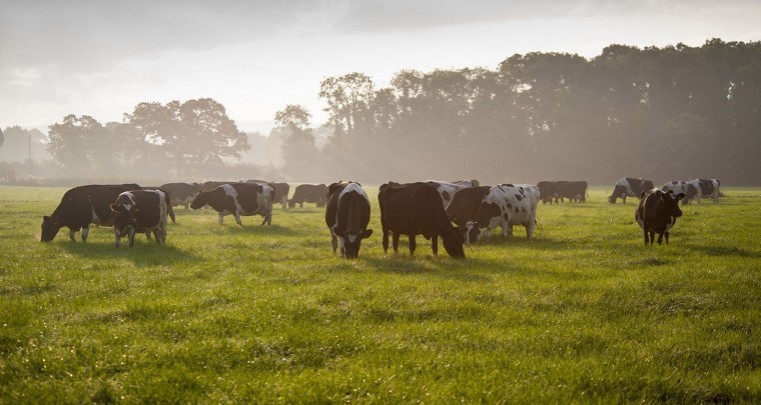Attention to detail in managing abundant autumn grazing will help dairy farmers to maximise production from forage in 2017 and therefore reduce their future costs of production, according to Germinal GB’s national agricultural sales manager Ben Wixey.
Speaking at UK Dairy Day, Mr Wixey said that having a clear plan about which fields will be prioritised for earliest spring grazing, and then managing with turnout in mind, is as critical as ever this year.
“Pastures destined for the first grazing of the spring should be the first ones put to bed this autumn,” he said. “These should be grazed down to around 4cm, which is equivalent to a cover of 1,500kgDM/ha.
“With the warm weather boosting grass growth at the moment, it is particularly important to ensure that the final grazing is sufficiently tight. This will remove the older grass that will otherwise reduce the quality of spring grazing and can also cause problems in early first cuts.
“Timing is then important in order to allow sufficient time for a reserve to be built up before the winter. If shut up in mid-October, the remaining autumn months plus some over-winter growth should typically allow the cover to reach an optimum for turnout of around 2,800kgDM/ha by mid-February.
“The same rationale applies to fields grazed later into the autumn, with these coming into the spring rotation later. All should be grazed down to 4cm, with the exception of the final fields to be grazed (in November/December), which should be left with 7-10cm growth (around 2,000kgDM/ha) to ensure sufficient cover for turnout.”
Accepting the unpredictability of growth rates and ground conditions in a typical British autumn, Mr Wixey stressed the importance of flexibility in order to achieve the required outcome.
“If the weather closes in sooner than ideal, then it may be necessary to shorten the grazing days – buffer feeding with silage – and using tactics like back-fencing to minimise sward damage. Alternatively, if the available grazing is incompatible with the feeding requirements of the milking cows, use youngstock or sheep (if available) to achieve the optimum covers before shutting up.
“The value of extended grazing is significant and is certainly not something that should only apply to spring block calvers. An early turnout can benefit all dairy farmers and for most this will start with disciplined and forward-thinking management during the autumn months.”




